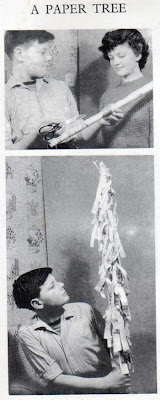I am fascinated by eccentrics and eccentricity (I cannot imagine why!) Over the past year or so I have been taking a literary journey around the lives of odd bods - I sincerely believe that the most interesting and creative people in the world are a little bit "different". This journey started after I watched a documentary about the poet R.S.Thomas, made for TV by his biographer Byron Rogers.
Thomas, a writer of beautiful though austere verse, was quite a serious curmudgeon who would not allow his wife a hoover because of the noise (hmm, I know someone like that...) and whose first action, on moving into an ancient draughty Welsh cottage, was to rip out the central heating. He wasn't keen on fridges, washing machines or televisions either.
Reader, I read the book and travelled on, via many stops - Henry James, The Bloomsbury Group, Anne Lister, Emily Dickinson, Laurence Sterne, J.L.Carr etc. - biographies, autobiographies and novels. I've just arrived back in Yorkshire and now I'm reading The Plot by Madeleine Bunting...
... an engrossing account of English history told through the story of The Plot and its setting in the landscape, and also a memoir of a talented but difficult man, the sculptor John Bunting, who became obsessed with this small piece of Yorkshire where he built a memorial chapel. The writer, his daughter, gives detailed instructions of how to reach the area, including map references, so the idea of visiting whilst reading the story was irresistible.
Hambleton Street is an old drovers road with Roman origins and The Plot lies just off it at Scotch Corner,a bend on this wide green track. We found the Street just off the A 170, near the top of Sutton Bank, and followed it through a mixture of old hedgerows, forestry plantations and bilberry bushes down to the small clearing.
Whatever significance this quiet spot had for its owner and his family, for us on that cool morning it had considerable magic, peopled as it was with silent figures.
You can walk on down Hambleton Street to Oldstead and Wass, but we chose to drive to Coxwold and visit Shandy Hall, once home to Laurence Sterne who wrote The Life and Opinions of Tristram Shandy, a teasing, comic novel telling the inconsequential story of a host of eccentric characters.
The curator of the Hall brought Sterne to life for us and I realised that he (Sterne) was having fun and enjoying his celebrity as a writer - but he was perhaps not an eccentric himself.
***
You may be interested in an "eccentricity test" I have found. According to studies there are 18 distinctive characteristics that differentiate a healthy eccentric person from a healthy ordinary person (although some may not always apply). The first 5 are in most people regarded as eccentric:
Nonconforming attitude
Idealistic
Intense curiosity
Happy obsession with a hobby or hobbies
Knew very early in his or her childhood that they were different from others.
Highly intelligent
Opinionated and outspoken
Unusual living or eating habits
Not interested in the opinions or company of others
Mischievous sense of humour
Oh well, who wants to be ordinary anyway?
***





















































